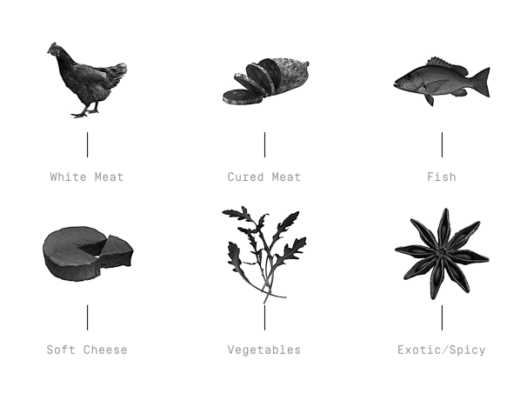Few things come as close to true perfection as a great bottle of wine. However, despite the vast majority of wines being utterly delicious, it’s doesn’t mean that wine isn’t subject to a fairly wide array of flaws. At the end of the day, wine is a natural product made from natural ingredients… and as a result, is subject to the same kinds of issues and problems as any other fruit-based food or drink.
Heartbreaking as it may seem, experts predict that around 10% of all wine bottles in the world are negatively affected by certain bacterias or other flaws. Despite this shocking high figure, plenty of wine drinkers are still in the dark when it comes to understanding what these flaws are, and how to identify them. We reckon knowing how to sniff out common flaws is fairly key to enhancing your enjoyment of wine… after all, you may have drank a flawed bottle at some point or another without realizing it, and could have written off a whole wine style as a result.
We’re going to take a closer look at the six most common wine flaws, give you the tips and tricks you need to identify them, and give some advice regarding what to do with a ruined bottle. Hopefully, this way you’ll be prepared should you ever come across a bottle which simply doesn’t seem quite right.
The Most Common Wine Faults
Oxidized Wine
- What is it?
Oxidized wine is wine which has been ruined after having too much exposure to oxygen. A little bit of oxygen is no bad thing when it comes to wine – after all, the barrel aging process and ‘breathing’ process alike is intended to slightly oxidize your wine, and ‘open up’ the flavors and aromas. However, too much oxygen, and disaster strikes: the wine will seem flat and lifeless, or even unpleasantly vinegary and discolored. Yuck!
- How to identify it
Oxidized wines will simply look wrong. Reds will take on dull, brownish hues, and their flavors will first flatten, then turn unpleasantly sour. Whites will take on an orangey hue, and taste similarly vile, and will oxidize more quickly than reds due to their lack of tannins.
- Can it be fixed?
No – once it’s gone, it’s gone. If you’ve left a bottle opened for too long without using any kind of preservation device, put it down as a lesson learned. If it’s oxidized as soon as you’ve opened it, the chances are the seal had some problems, or it hadn’t been stored correctly. Take it back to the wine store you bought it from, let them know what’s happened, and ask for a replacement or refund.
Corked Wine (TCA)
- What is it?
Probably the most well-known, yet most widely misunderstood of the wine flaws. Corked wine occurs when a fungal chemical contaminant gets into your bottle, usually via a natural cork or from the processing line at a winery.
- How to identify it
Once smelled, corked wine is never forgotten – it really is that bad. TCA taint smells like moldy newspapers and wet dogs, and the fruit flavors in the wine will be completely flattened and lifeless.
- Can it be fixed?
Technically, yes. It seems like every year vinologists come up with some new method to remove cork taint from wine, which range from complicated procedures using cling film, copper coins, and other chemical inserts. Wine should be a pleasure, not a challenge or a chore. If your wine smells like a moldy basement, for goodness’ sake, send it back to the shop!
Secondary Fermentation
- What is it?
You’ll be able to notice secondary fermentation straight away – your still table wine will have a slight fizz to it, which can be really off-putting and will negatively affect the flavor and mouthfeel. It’s caused by some residual sugars being left in the bottle, which then start fermenting while the bottle is aged, or simply while it sits on the shelf.
- How to identify it
Simply by the presence of bubbles in your wine. This usually affects wines made with low-intervention methods, and can be found in young red wines, too.
- Can it be fixed?
No – unless you have access to some seriously specific wine tech, you won’t be able to stop the secondary fermentation from happening. If you still want to drink your wine, you can put it in a jug or decanter and shake it until all the bubbles have dissipated… but it’s likely the wine won’t be at its best.
Cooked Wine
- What is it?
Essentially, ‘cooked’ wine is what we call wines which have been negatively affected by heat damage. Often, palettes of wine will spend long periods of time sitting inside a roasting hot cargo hold (or simply will get ruined by sitting in a basement or warehouse without adequate temperature controls), and the exposure to heat will ruin the wine either by speeding up the chemical processes, or causing the wine to expand in the bottle.
- How to identify it
Your wine will come out of the bottle tasting like a sauce you’d normally serve with your steak – jammy, overly processed, concentrated and sweet. Because the expansion caused by heat damage may affect the seal, your wine may also be flattened by oxidation.
- Can it be fixed?
Once wine is cooked, it can’t be uncooked again. However, you can stop this flaw from occurring in your collection by ensuring your wine is kept at an optimum temperature which also has the consistency your wine deserves.
Light Damage
- What is it?
Like most natural products, wine can be damaged by prolonged exposure to UV light. Wine bottles might look pretty sittin on your windowsill, but that exposure to sunlight could be wreaking havoc within!
- How to identify it
Light damage (also known rather poetically as ‘light strike’) tends to affect more delicate wines, such as Pinot Grigio and Sauvignon Blanc. It causes the wine’s structure to change, and results in the ubiquitous ‘damp newspaper’ smell that tells you your wine is flawed.
- Can it be fixed?
No – so make sure your wine is stored in a rack away from direct light sources. If you don’t have a cellar or basement, a cupboard or shady corner will do just fine.
Brett
- What is it?
The shortened name of brettanomyces, brett is a yeast which can be found pretty much anywhere, and is fairly common in wineries and out in vineyards. It causes wines to have an earthy, muddy taste which – in small quantities – isn’t particularly unpleasant. Indeed, wineries often encourage a little bit of brett in their wines to establish a signature style.
- How to identify it
A little brett will cause an earthy, slightly musty taste in your wine. It goes without saying, however, that a little of this goes a long way, and too much will be really quite unpalatable.
- Can it be fixed?
No, but it’s worth doing some research to see if those slightly dodgy flavor profiles should be in your wine in the first place.
Something to Bear in Mind…
As we’ve seen, most of these wine flaws don’t really have simple solutions to them – they’re just a result of the natural processes that go into wine production. If you really feel like your wine isn’t hitting the spot, or sense there might be something seriously wrong with it, don’t hesitate to take the bottle back to the shop. All good wine merchants will be fully aware of the possibility of their wines being flawed, and you could be doing them a favor by alerting them to a flaw in their produce. If they refuse a replacement… well, be sure to let all your wine-loving friends about it!





